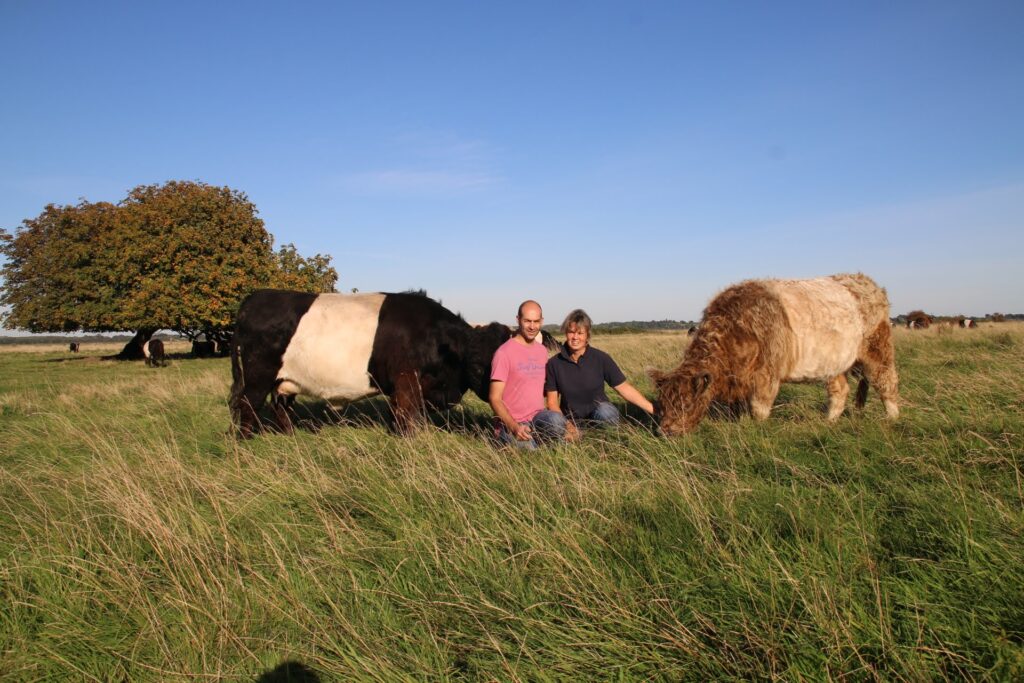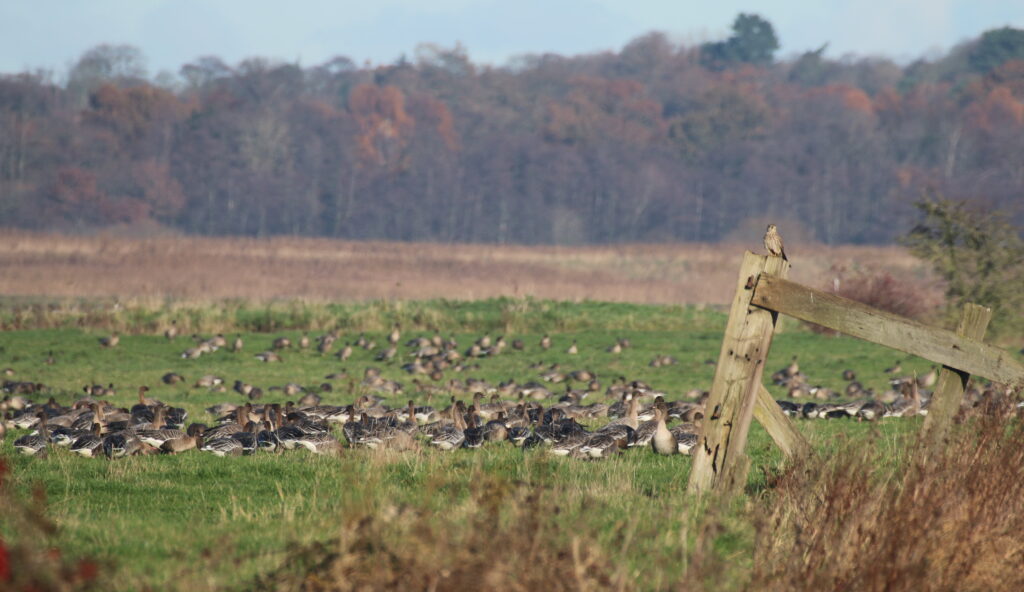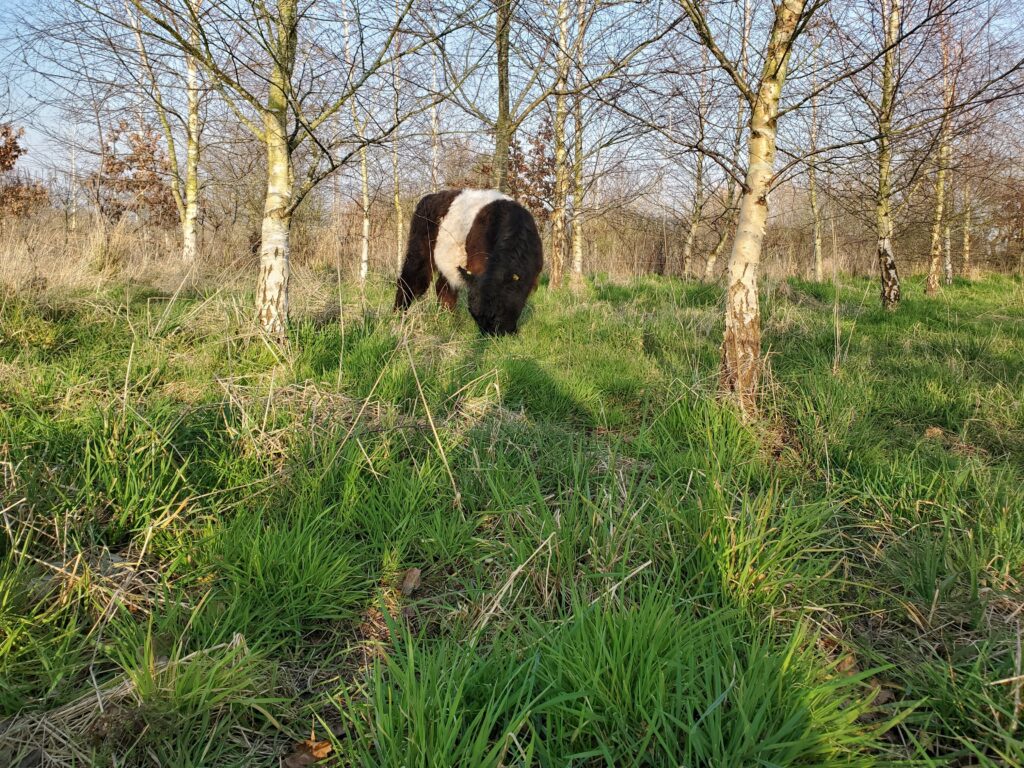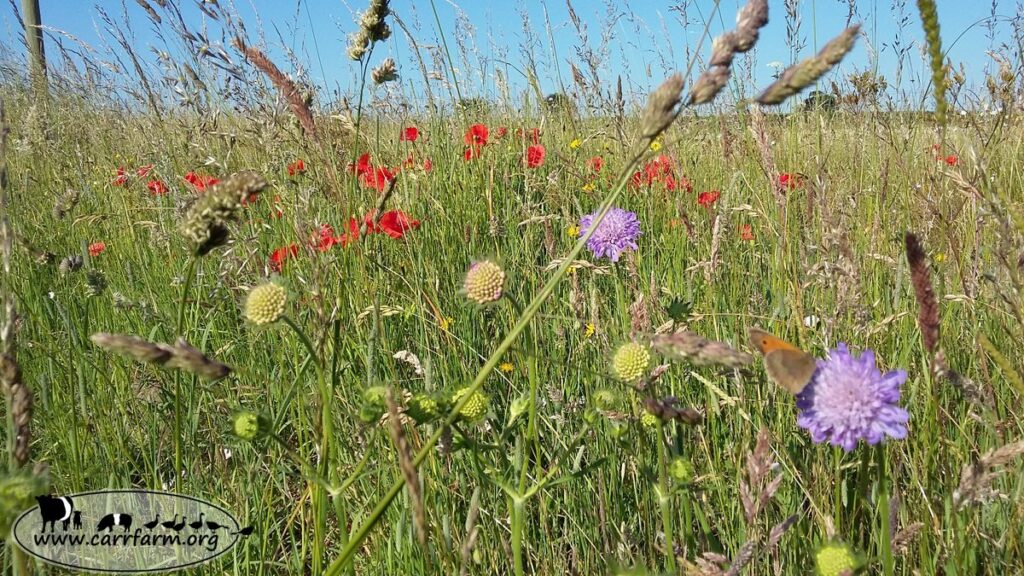David & Nicola Chapman, Carr Farm 1/3
Tell us about your farm, its location, size, altitude, climate, soils, enterprises, organic/PfL/other status

David & Nicola with their 'Belties' Belted Galloways
Our small farm is located at the southern end of the Norfolk Broads on the River Waveney. The farm comprises just over 100 acres and is broadly split two thirds clay grazing marshes, at 2m below sea level and one third sand and gravel former arable fields, now permanent pasture at the heady altitude of 10m above sea level. The farmyard and house dates from the 1600s and is in the centre of the farm with an adjacent wet Alder Carr woodland, from which the farm gets its name.
The farm is located approx. 4 miles from the east coast and its microclimate is much affected by both its proximity to the sea and the adjacent river. The marshes are flat with the higher fields being north facing, the farm is quite well sheltered from the prevailing south westerlies but if the weather comes from the east, it arrives with a blast straight off the North Sea. The River Waveney also affects the microclimate with river mists often providing moisture on the marshes in the middle of summer heat waves.
Apart from our own farm we conservation graze a number of nature reserves nearby owned by Suffolk Wildlife Trust, managed by Norfolk Wildlife Trust and under private ownership totalling an additional area of approximately 160 acres.
By working with the wildlife trusts and private landowners we use our cattle to help achieve their objectives of improving and enhancing their habitats for flora, fauna and birdlife.
As first-generation farmers our passion has been to convert our own former small arable farm to a biodiverse pastoral habitat using our beloved Belted Galloway cattle. In addition, by working with the wildlife trusts and private landowners we use our cattle to help achieve their objectives of improving and enhancing their habitats for flora, fauna and birdlife.
We farm without inorganic fertilizers and pesticides and since 2017 have been certified as a Pasture for Life farm. Our Belted Galloway enterprise comprises pedigree registered stock, so in addition to beef production we also sell breeding stock. Also, on the farm we have a breeding mixed flock of geese which serve a useful function with some weed control and are also reared for egg production and Christmas geese and two small holiday lets in a converted former dairy.

Birdlife on the marshes at Carr Farm
Share with us a general description of the biodiversity on your farm – essentially above ground (but reference to below ground if relevant) – both flora and fauna.
We moved to Carr Farm in August 2011 in the middle of a drought. Norfolk is the driest county in the UK and living with regular droughts has been a major consideration in considering pasture species to utilise and stocking rates. The higher fields were arable and the marshes although grazed had within recent years been drained for growing sugar beet. The first changes we made were to put the former arable fields down to permanent pasture utilising in particular deep rooted drought resistant species. These fields have subsequently been overseeded via bale rolling to incorporate additional deep rooted herbal plants.
The landscape is quite open with few hedges and trees other than our wet alder wood on the edge of the marshes. A survey of the alder wood shows it has some age with many very old alder coppice stools, the wood also contains horse chestnut, ash, oak, various species of willow, beech and holly. A further two small areas of woodland adjacent to the pasture were planted by us in 2012 with a mix of native species. These small woods are located adjacent to the grazing fields and are now being opened up for grazing cattle to browse. Approx. 1000m of hedgerows have been planted to provide shade, shelter and wild bird habitat around the field boundaries on the farm.
The number of different species of wildflowers appearing on the fields is increasing year on year. As well as some of the more common flowers, such as, buttercups, dandelions, ox-eye daisy’s, cornflowers, trefoils, vetches, lady’s bedstraw, yarrow, scabious, saxifrage, speedwell, stitchwort and many more this year a rare cudweed appeared on the top fields. On the clay marshes quite different grasses and flowers are found including ragged robin, marsh orchids, frog bits, bog beans, watercress etc.
The emergence of more flowering plant species on the meadows is matched by increasing insect numbers and in turn by the bat population on the farm also increasing, four species were identified during a farm survey.

Beltie yearlings in a new wood at Carr Farm
We have been monitoring our population of hedgehogs with infra-red night cameras and are pleased to say that the population whilst maybe not growing is certainly stable, like many areas in the Broads there are very good muntjac and Chinese water deer numbers. The field and water vole population on the farm is very healthy and otters are becoming a more common sight, venturing away from the main river to catch large fish in the outlying ditches of the Broads drainage system. We have good numbers of the more common reptiles like slow worms, lizards, grass snakes, frogs and toads.
Birds, birds, birds! This year we had five owlets in our two barn owl boxes, watching them grow and fledge was amazing. We also have a resident tawny owl in our wood and little owls on the marsh edges.
The marshes are especially important to bird life, we have large great population of resident skylarks as well as herons, egrets, mute swans, reed buntings, snipe and all the visiting over wintering waders and wildfowl. The excitement of the arrival of many thousands of pink-foots on our marshes in November is rivalled only by the return of the swallows to nest in the old stables each spring.

The wildflower meadows at Carr Farm



